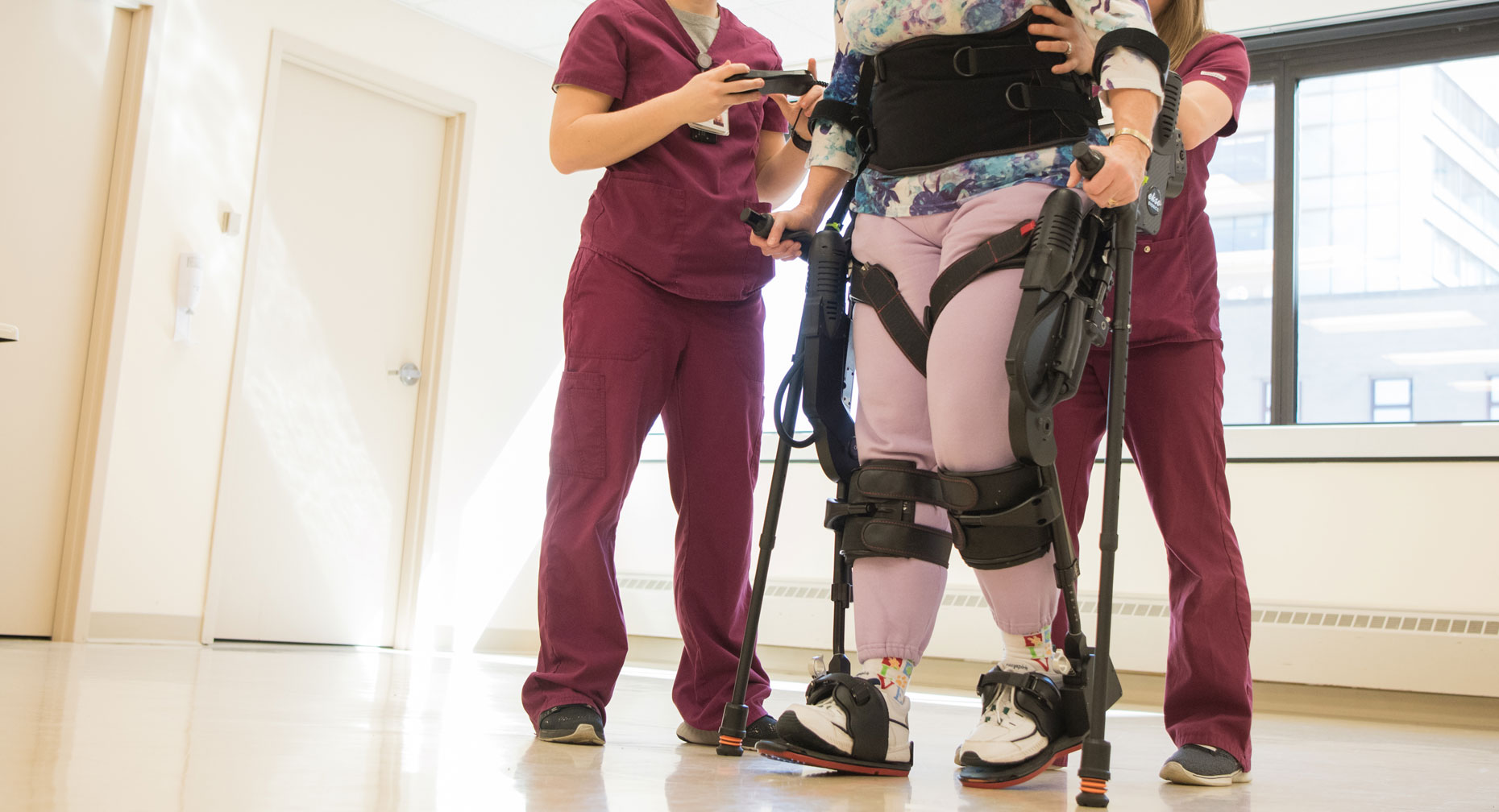Amazing Tech Advances for Stroke Rehab

Answer a few questions and we'll provide you with a list of primary care providers that best fit your needs.
Robotics and computer-assisted technology are giving stroke patients a helping hand in their recovery. In many cases they enable patients to regain mobility faster than traditional stroke rehabilitation alone.
“With conventional physical therapy, you can’t begin therapy until you are able to stand up, but with the help of a robotic exoskeleton, you can start therapy sooner,” says Antony Jacob, MD, of Premier Physical Medicine Associates.
A robotic exoskeleton is a wearable device that enables a patient to stand. The exoskeleton’s small motors enable the patient to make her first steps, moving the knee and hip of the affected leg.
The motors do most of the work in the beginning. And the patient gradually takes over the workload from the motors as she regains function.
Advantages of Robotic Stroke Therapy
Dr. Jacob explains that robotic stroke therapy:
- Gets stroke patients on their feet sooner. This promotes faster physical and psychological gains, improves circulation, and reduces the risk of developing bed sores and blood clots. Earlier movement also prevents loss of muscle tone.
- Accelerates patients’ recovery by allowing them to complete more repetitions of an activity than is possible with conventional therapy. The physical exertion of conventional therapy tires both patient and physical therapist. Therapy powered by a robotic exoskeleton can be tolerated for longer periods. The increased number of repetitions can speed up development of new pathways in the brain to restore movement lost in the stroke.
- Allows patients to work on rehab independently while therapists assist other patients. This also enables patients to repeat movements more frequently than is possible through conventional therapy.
- Increases the window following a stroke that a patient can regain lost function. The greatest amount of post-stroke recovery happens in the first 30 days and diminishes after 90 days. But with the help of robotics, patients can make progress well beyond that timeframe.
“Someone who had a stroke a year ago could be helped by robotic technology,” says Dr. Jacob. “Patients are excited when they haven’t walked for a year, and then get started again,” with the help of robotics. He cautions that in such cases the patient’s bone density should be checked to make sure it is sufficient for robotic therapy. Inactivity can result in bone loss and increased fracture risk.
Robotic stroke therapy also is available for arms and hands. Dr. Jacob adds that a patient’s functional arm or leg, not affected by stroke, can be constrained during therapy to force the patient to use the limb weakened by stroke. He explains, “When your right hand is weak, there’s a tendency for you to use your left hand,” he explains.
With the help of a robotic exoskeleton, you can start therapy sooner,” says Antony Jacob, MD
Virtual Reality = Real Results
Virtual reality is another technology bringing real results for stroke patients. Images viewed in a virtual reality headset prompt stroke patients to go through motions, such as opening a door, shaking a hand or picking up an object.
“The visual stimuli of seeing helps the brain,” Dr. Jacob says. “When you see activity, it’s really happening.” Virtual reality technology can be paired with robotic devices to help a patient complete motions in response to the virtual image. As in walking with the help of an exoskeleton, repeatedly performing tasks through virtual reality can accelerate recovery, more than is often possible in a conventional rehab environment.
Looking to the Future
Robotic stroke therapy is available in inpatient and outpatient settings. Once the cost of the technology decreases enough, and insurance companies cover it, Dr. Jacob foresees robotic devices being used at home to continue stroke therapy.
Eventually, robotic exoskeletons will be small enough to wear under clothing to help people with impaired physical function in day-to-day activity.
Answer a few questions and we'll provide you with a list of primary care providers that best fit your needs.
Source: Antony Jacob, MD, Premier Physical Medicine Associates; Today’s Geriatric Medicine; Cancer Network;

